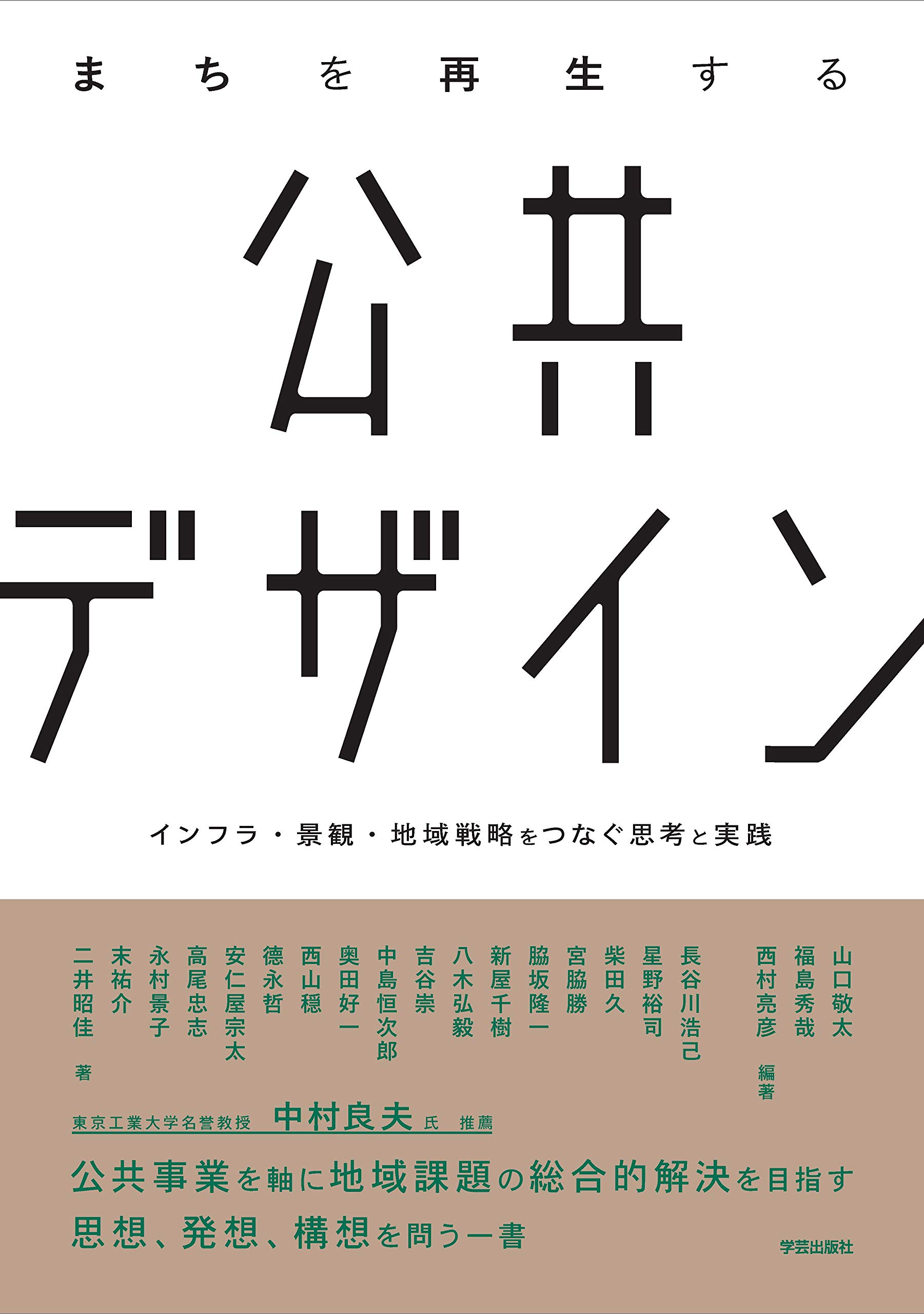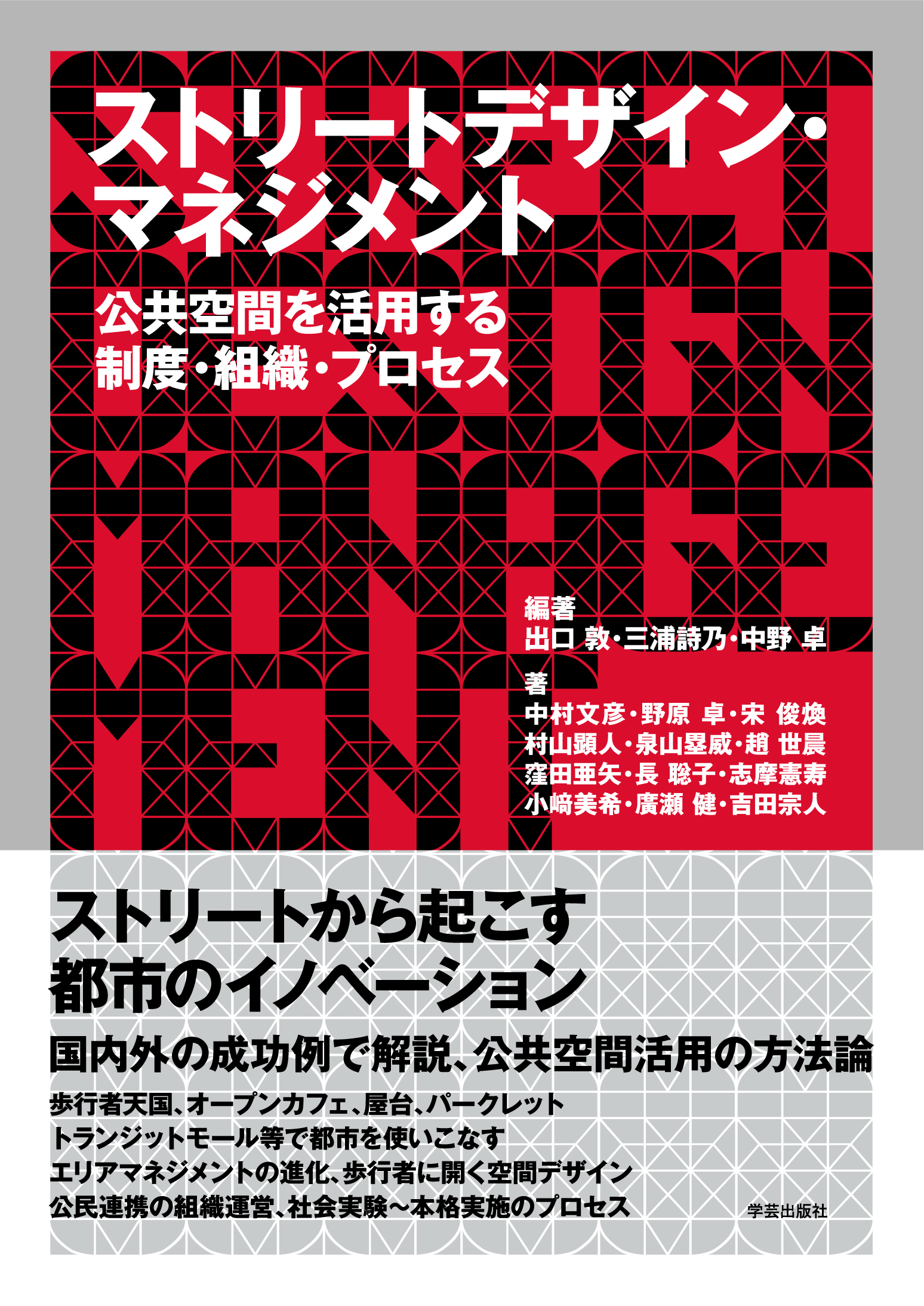
Title
Machi wo saisei suru kōkyō dezain (Public Design to Regional and Community Development - Thinking and Practice to Link Infrastructure, Landscapes, and Regional Strategy)
Size
240 pages, A5 format
Language
Japanese
Released
June 10, 2019
ISBN
978-4-7615-3245-1
Published by
Gakugei Shuppan-sha
Book Info
See Book Availability at Library
Japanese Page
This book has been planned and edited by three researchers in the field of landscape design (landscape research and civil engineering design), which has been developed based on landscape engineering in the field of civil engineering, which in turn deals with the infrastructure that supports our daily lives. The word "landscape" does not refer to mere decoration or design, but rather to a state of “appearance” that originally emerges from the relationships between various elements.
Landscape engineering is a discipline that aims to comprehensively and creatively solve various issues related to life, culture, and infrastructure by linking subdivided specialized fields while treating various actions and events related to landscape as an "overall view" of the city and nature in an integrated manner.
Although landscape engineering shares with engineering an orientation toward resolving issues, it differs from other civil engineering fields with a specific scope, such as geotechnical sites, materials, rivers, coasts, and traffic, in its characteristic of placing the relationships between people and society and the environment and infrastructure underlying them at the center of its field of inquiry and aiming for an overall solution among the diverse solutions through the creation of good relationships between these elements.
This discipline has also produced many designers and planners who specialize in infrastructure design and public field management, such as public facilities and public spaces, working toward problem solutions.
The field of landscape design has consistently developed in forms that respond to the needs of citizens and society. However, the growing seriousness of various local issues in recent years has diversified the needs that public facilities and public spaces are required to fulfill, making it necessary to consider from a broader perspective how local economies, societies, and cultures should be in relation to infrastructure when creatively solving problems.
As a result, sites in local areas have begun to make efforts toward new designs and community building, drawing on local vision and seeking to comprehensively solve local issues based on infrastructure designs and public projects.
This book names these new initiatives “public design” and presents the framework and specific examples to discuss the potential of and current challenges for public design.
As the diverse examples in this book show, the landscape design field of the future is expected to play the role of an advanced specialization that resolves specific problems, combining comprehensive strategies for regional regeneration, flexible promotion, and management of public works, and spatial and program designs that create places for cooperation with the community.
However, these efforts have just begun and do not yet have enough people to continue them.
The authors hope that this book will be read by people of all ages and will trigger a growth in interest in designs relating to infrastructure and regional and community development.
(Written by FUKUSHIMA Hideya, Assistant Professor, School of Engineering / 2020)



 Find a book
Find a book



